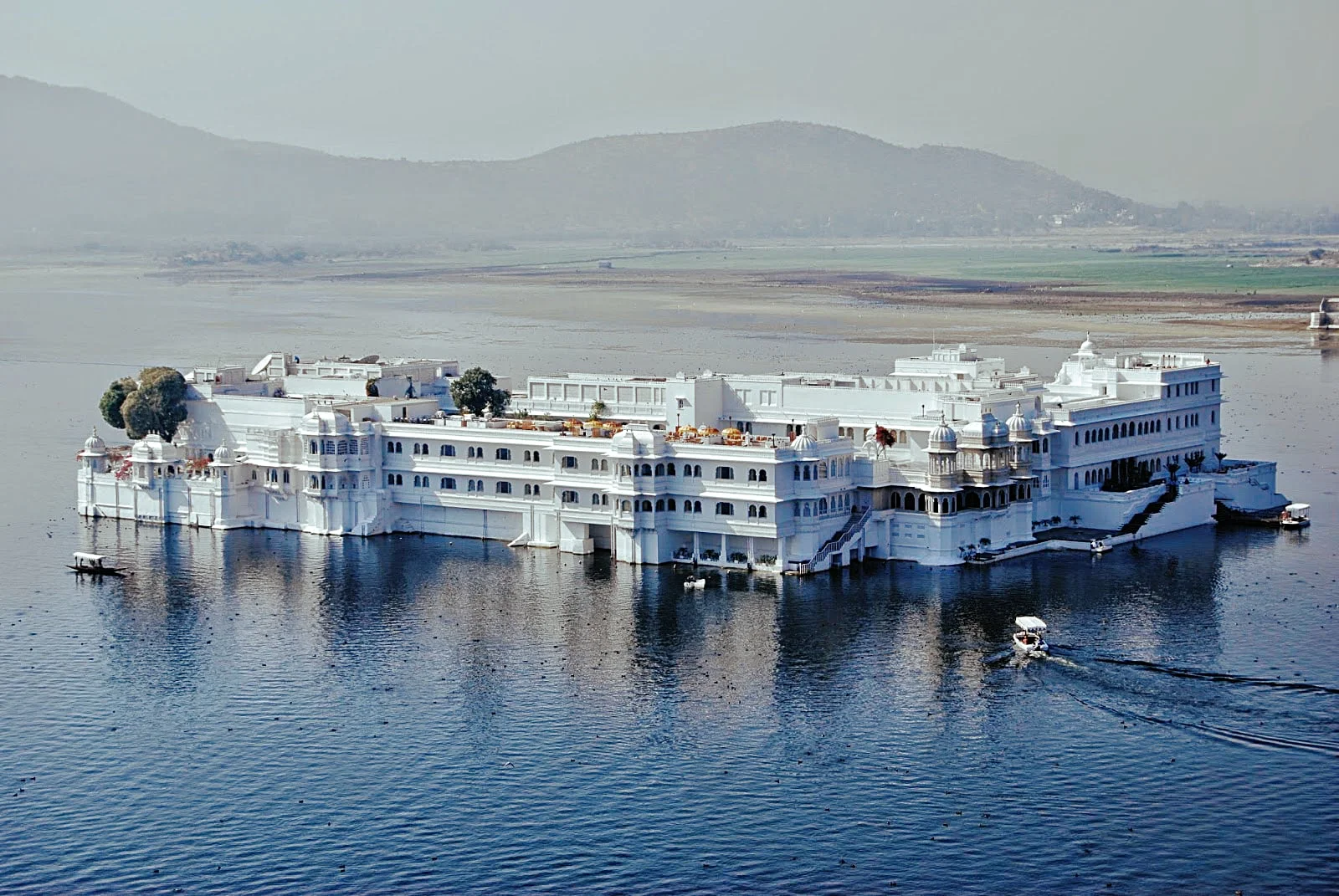The City Palace of Udaipur, Rajasthan, India
While we were motoring to the Lake Palace, the spectacle of Udaipur, which was built in the 16th century by the Maharajahs of Mewar, unfolded itself along the banks. Their dynasty is said to have been descended from the Sun God. They were the only of the Rajput tribe who refused to have anything to do with the Mughal Court, and you could breathe their pride like music when you see the City Palace built on the water’s edge.
The City Palace of Udaipur, India.
Anchored in the open waters was an impressive, old barge constructed of blue planks and red steps that led to an equally red, wooden verandah where the princes sat when they went out for a stroll with their ladies. The Lake Palace was their summer palace, which they would visit with the entire Court. A floating paradise: an oasis of rejuvenation and poetry, because they loved stories and poets would come from all over India.
Inside the City Palace, there were wall murals depicting battles with elephants and the proud Rajput warriors, ready to die for their honour and their land, drawn like miniatures. To be more exact, the title of Maharaja, which originates from the Sanskrit, is known as Maharana, meaning ‘warrior’, here in Udaipur, the former capital of the kingdom of Mewar.
Traditionally, the Maharana would be weighed with a counterbalance of gold and silver which would then be distributed amongst his people. We were shown an arena where elephants would be put to fight to prove their battle-worthiness after having been fed with hashish. And beyond the gates, the city was laid out panoramically, with its busy bazaars and streets, full of bicycles, carriages, carts, camels, cows and men in white pyjamas…
Travel memoirs from the book: INDIA and my Persian garden
The Lake Palace in Udaipur, India.


